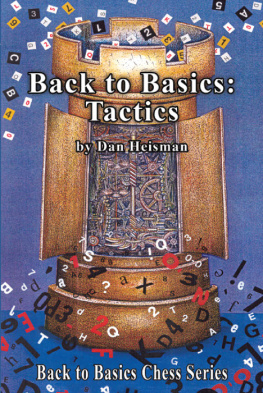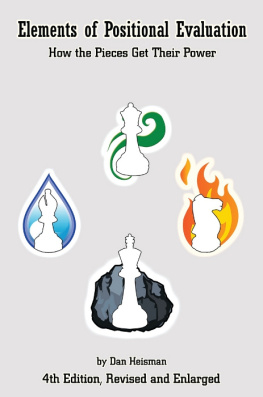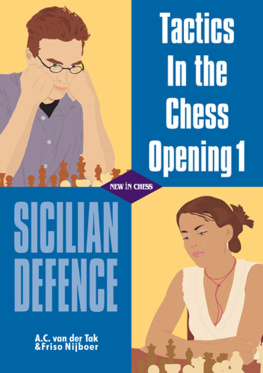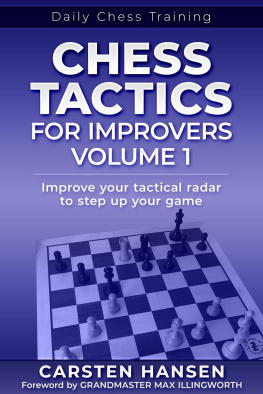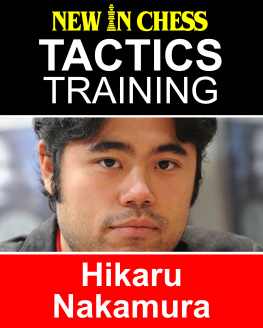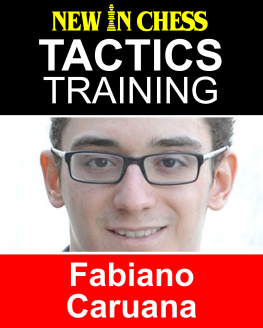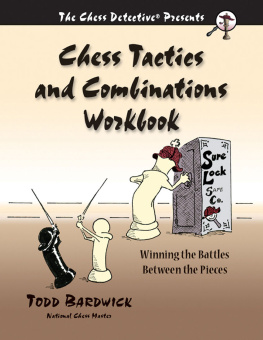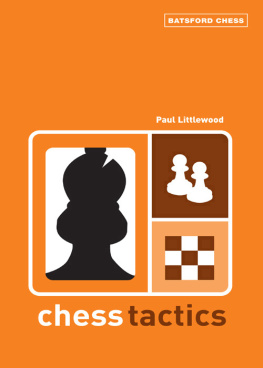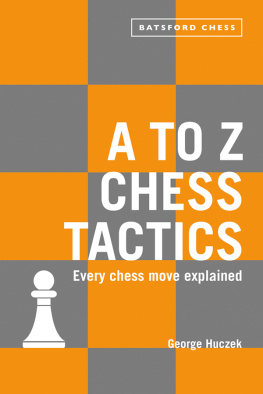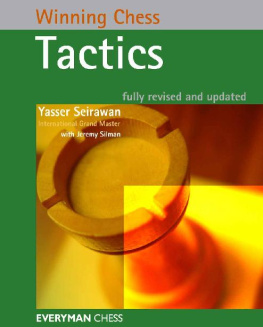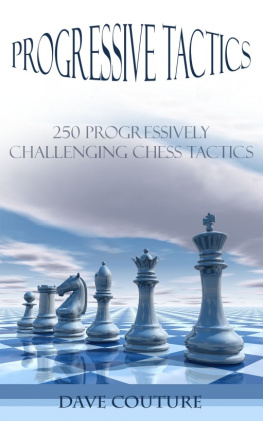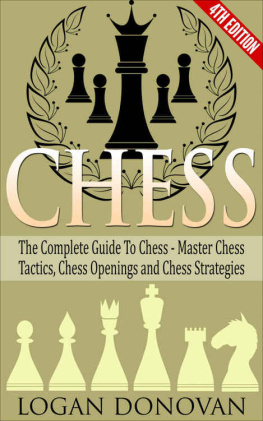Back to Basics:
Tactics
by
Dan Heisman

2010
Russell Enterprises, Inc.
Milford, CT USA
Back to Basics: Tactics
by
Dan Heisman
ISBN: 978-1-936490-34-7
Copyright 2011
Dan Heisman
All Rights Reserved
First Printing 2007
Second Printing 2011
No part of this book may be used, reproduced, stored in a retrieval system or transmitted in any manner or form whatsoever or by any means, electronic, electrostatic, magnetic tape, photocopying, recording or otherwise, without the express written permission from the publisher except in the case of brief quotations embodied in critical articles or reviews.
Published by:
Russell Enterprises, Inc.
P.O. Box 3131
Milford, CT 06460 USA
http://www.russell-enterprises.com
Cover design by Janel Lowrance and Zygmunt Nasiolkowski
Printed in the United States of America

Introduction
In chess, if you capture each of your opponents pieces, winning should be easy. But if you lose all of your pieces, you cant win! Even if you just get ahead by a small amount of material, your chances of winning soar. The way to win your opponents pieces is through the use of tactics. This book is an introduction to the various kinds of basic tactics. I try to comprehensively cover the subject with instructional material, examples, and problems of all types. There are about 500 examples ranging from too easy to very difficult! Oh, and by the way, tactics are usually why most people find chess fun! I hope this book greatly enhances your enjoyment learning about and benefiting from the recurring patterns of tactics.
It does not matter who gets the advantage out of the opening, if one of the players is likely to lose a piece to a simple tactic in the middlegame. Losing a piece from an advantageous position will almost always result in a lost position. So study tactics, not openings, until you almost never lose pieces to simple tactical motifs.
The Importance of Tactics
Chess games are generally won in one of two ways:
(1) Attrition, where one side gets a material advantage and then uses good technique to trade down into an easily won endgame; or
(2) A direct mating attack on the opponents king.
Whichever way the game is won, its usually a tactic that creates the material advantage or leads to the mating attack. Of all the skills in chess, the one that correlates highest with how good you are is your tactical ability. Especially among beginning and intermediate players, the one who is the better tactical player almost always wins. So, until you are fairly proficient, it makes sense to concentrate more on tactics than on any other part of the game. Hence, learning many of the particulars about positional play wont help you if you find yourself overlooking tactics and losing pieces.
Now you might say, I didnt find that tactic my opponent just blundered. But what is the very definition of a blunder if it is not to allow some simple tactic? For example, if he places a piece where you can win it with a simple tactic, that is certainly a blunder, but you still had to find the tactic. Even if he just puts a piece where you can capture it outright (this is called putting it en prise), then in a trivial sense he has made a tactical mistake (see , The Levels of Tactics). Yet, to benefit from his error, you still have to see that you can win that piece.
In his book Rapid Chess Improvement, Michael de la Maza suggests that a player might be able to reach the expert level just from the intense study of tactics. I learned from the Russians that repetitive study of basic tactics is probably the single most important thing any beginner can do to improve at chess. This book will help you do that!
Defining Tactics
There are two good definitions of chess tactics:
1. Tactics The science of piece safety
2. Tactics Forced maneuvers leading to the gain of material or checkmate. One might add forcing a draw from an otherwise inferior position.
The second definition is more common, and might be extended to include forced maneuvers for other gains, such as exposing the enemy king or ruining the opponents pawn structure.
No matter what the definition, the intention is clear: to take advantage of the offense, to take advantage of the initiative, to force some advantage. Interestingly, when studying tactics, it is equally important to use the same information to not let the opponent undertake those same tactics against you. So in a very real sense, playing a tactic is only equally effective to preventing that same tactic. If you are one of those players who only studies tactics to find ways you can win, you will remain a weak player until you can use those same skills defensively, to prevent your opponents tactics. Its nonsensical to only look for tactics for yourself and then let your opponent get a winning advantage. It is much harder to win when you are down material!
A tactical motif is a specific idea. When motifs are combined in a tactic, it is called a combination. This book contains mostly single motif problems and elementary combinations. Examples of motifs (discussed at length in ) are pins, skewers, removal-of-the guard, and double attacks.
Solving Problems vs. Finding Tactics in Games
One of the most important things to know about studying tactics is that you are looking at examples and problems that have requirements and solutions such as:
1. White (or Black) to Play and Win this means the side to play, assuming best defense, can force a position that is theoretically winning. In other words, the position becomes such that if two very good players were playing, the player to move could win fairly easily from that position.
2. White (or Black) to Play and Mate the side to play can force checkmate, although the number of moves it will take is not specified. This is a forcing sequence of moves that leads to an unstoppable checkmate.
3. White (or Black) to Play and Mate in N Moves in this kind of problem you must force mate in a specific number of moves. Usually finding a mate in more than the required number is very easy, so finding the mate in only N moves is the challenge.
4. White (or Black) to Play and Draw the side to move can force a draw, usually from a position that is otherwise inferior or lost. The draw is often because of:
(A) Stalemate the side to move is not in check and has no legal moves with any of his pieces.
(B) Threefold Repetition of Position the position (not the moves) can be repeated three times with the same player to move. And example of this might be a perpetual check where the side that wishes to draw can continuously check the opposing king until the threefold repetition is reached.
(C) Lack of Mating Material neither side has enough material to checkmate. For example, a king against a king; a king against a king and bishop; a king against a king and knight; or a king against a king and two knights (in this case checkmate is possible, but not unavoidable).
In problems, the requirements are stated, the author ensures that the solutions are in place, and he provides the correct answers. Unfortunately, this is not the way real chess is played! In a real game, no one stands behind your opponent and holds up a sign saying, White to Play and Win! or Black to Play and Mate in Two. In fact, during a game your thinking process is inherently different because:
1. In a problem you are looking for the intended solution

